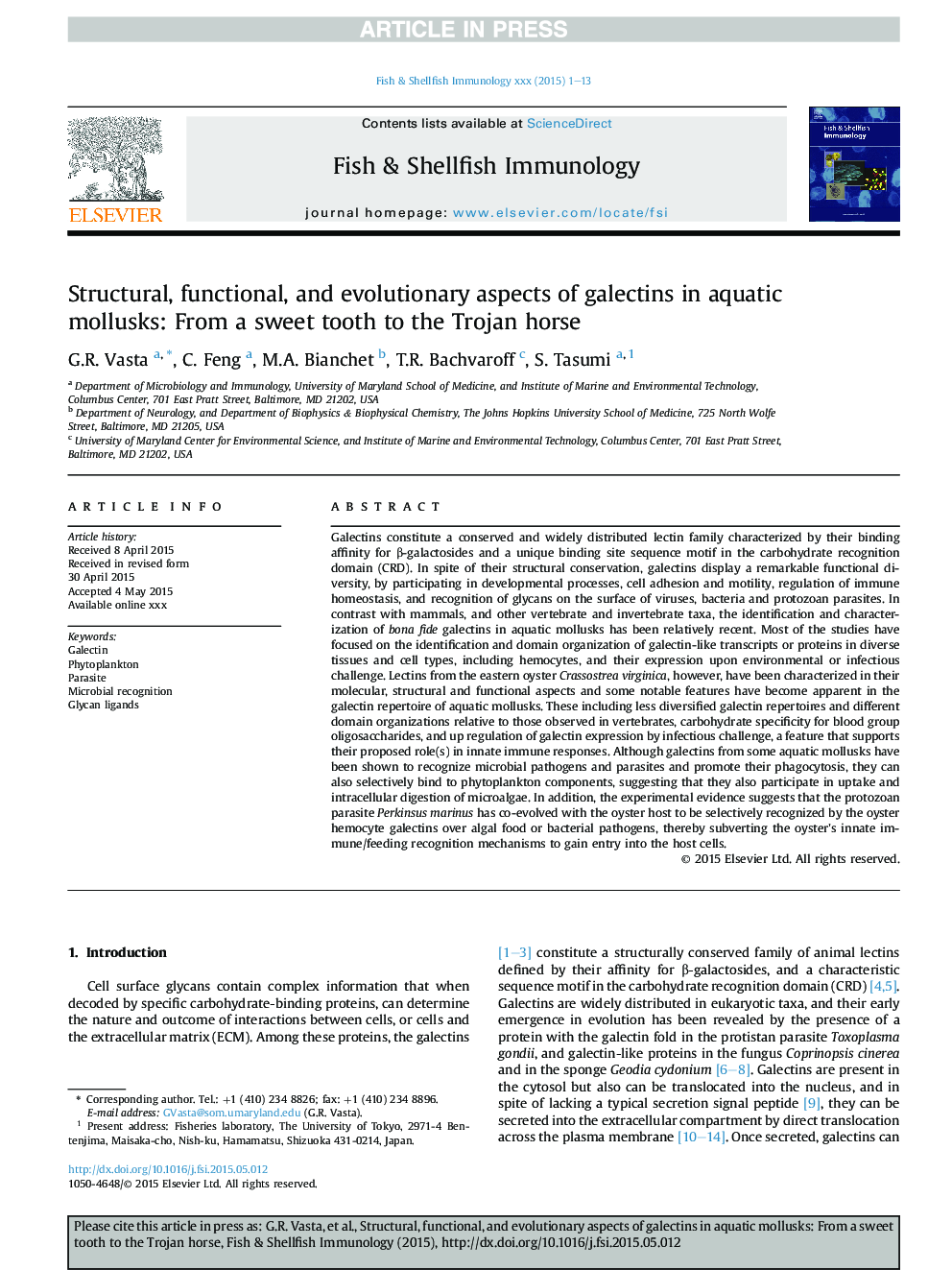| کد مقاله | کد نشریه | سال انتشار | مقاله انگلیسی | نسخه تمام متن |
|---|---|---|---|---|
| 10971766 | 1106742 | 2015 | 13 صفحه PDF | دانلود رایگان |
عنوان انگلیسی مقاله ISI
Structural, functional, and evolutionary aspects of galectins in aquatic mollusks: From a sweet tooth to the Trojan horse
ترجمه فارسی عنوان
جنبه های ساختاری، عملکردی و تکاملی گالکستین در موزهای آبزی: از یک دندان شیرین به اسب تروا
دانلود مقاله + سفارش ترجمه
دانلود مقاله ISI انگلیسی
رایگان برای ایرانیان
کلمات کلیدی
گالکتین، فیتوپلانکتون، انگل، شناخت میکروبی، لیگاند گلیکان،
موضوعات مرتبط
علوم زیستی و بیوفناوری
علوم کشاورزی و بیولوژیک
علوم آبزیان
چکیده انگلیسی
Galectins constitute a conserved and widely distributed lectin family characterized by their binding affinity for β-galactosides and a unique binding site sequence motif in the carbohydrate recognition domain (CRD). In spite of their structural conservation, galectins display a remarkable functional diversity, by participating in developmental processes, cell adhesion and motility, regulation of immune homeostasis, and recognition of glycans on the surface of viruses, bacteria and protozoan parasites. In contrast with mammals, and other vertebrate and invertebrate taxa, the identification and characterization of bona fide galectins in aquatic mollusks has been relatively recent. Most of the studies have focused on the identification and domain organization of galectin-like transcripts or proteins in diverse tissues and cell types, including hemocytes, and their expression upon environmental or infectious challenge. Lectins from the eastern oyster Crassostrea virginica, however, have been characterized in their molecular, structural and functional aspects and some notable features have become apparent in the galectin repertoire of aquatic mollusks. These including less diversified galectin repertoires and different domain organizations relative to those observed in vertebrates, carbohydrate specificity for blood group oligosaccharides, and up regulation of galectin expression by infectious challenge, a feature that supports their proposed role(s) in innate immune responses. Although galectins from some aquatic mollusks have been shown to recognize microbial pathogens and parasites and promote their phagocytosis, they can also selectively bind to phytoplankton components, suggesting that they also participate in uptake and intracellular digestion of microalgae. In addition, the experimental evidence suggests that the protozoan parasite Perkinsus marinus has co-evolved with the oyster host to be selectively recognized by the oyster hemocyte galectins over algal food or bacterial pathogens, thereby subverting the oyster's innate immune/feeding recognition mechanisms to gain entry into the host cells.
ناشر
Database: Elsevier - ScienceDirect (ساینس دایرکت)
Journal: Fish & Shellfish Immunology - Volume 46, Issue 1, September 2015, Pages 94-106
Journal: Fish & Shellfish Immunology - Volume 46, Issue 1, September 2015, Pages 94-106
نویسندگان
G.R. Vasta, C. Feng, M.A. Bianchet, T.R. Bachvaroff, S. Tasumi,
